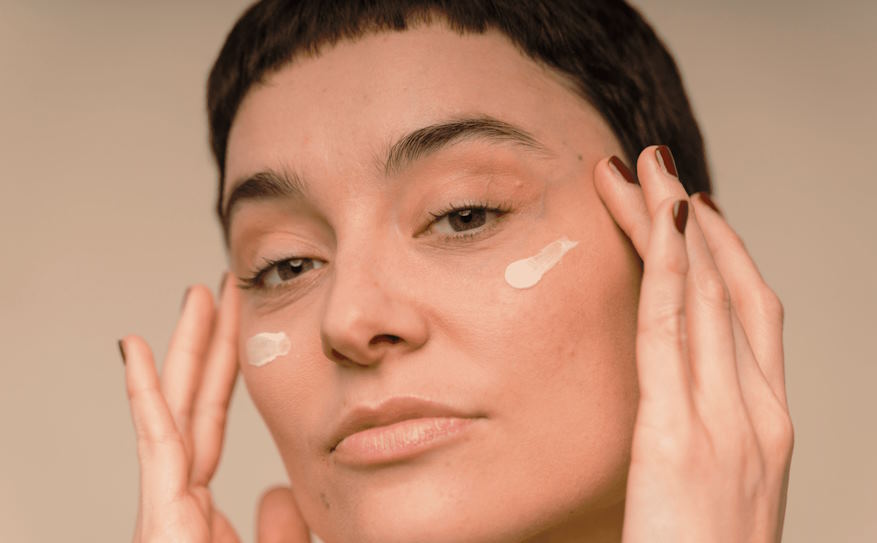Home » Glowing Skin Essentials » Tips For Preventing And Treating Stretch Marks
Tips For Preventing And Treating Stretch Marks

Ever wondered how those little lines on your skin got there and if there’s anything you can do about them? Stretch marks might seem like a permanent part of the skin’s landscape, but they don’t have to be! Picture this: just like you can manage a messy room with the right tools, you can also manage stretch marks with some easy tips and tricks.
Understanding Stretch Marks
What Are Stretch Marks?
Stretch marks, also known as striae or striae distensae, are long, narrow streaks that appear on the skin when it stretches too quickly. They can be red, purple, or even white, depending on how long they’ve been there. Imagine your skin as a stretchy fabric. When you pull it too hard, it can start to tear, leaving behind those marks. It’s not just about appearance—stretch marks are a sign that your skin has been under a lot of stress.
Why Do They Happen?
Stretch marks are like the lines on a well-loved book cover—evidence of a journey. They can appear for a variety of reasons, including:
| Cause | Description |
| Pregnancy | The skin stretches to accommodate a growing baby. |
| Puberty | Rapid growth spurts during adolescence can cause them. |
| Weight Fluctuations | Gaining or losing weight quickly can strain the skin. |
| Hormonal Changes | Changes in hormones can affect skin elasticity. |
| Genetics | If your parents had stretch marks, you might too. |
Understanding these causes can help you figure out which prevention strategies might work best for you.
Tips for Preventing Stretch Marks
Just like you would take steps to avoid a messy house, there are things you can do to keep your skin from getting stretch marks. Here are some easy and effective tips:
Stay Hydrated
Drinking plenty of water is like giving your skin a daily dose of a moisture boost. Think of your skin as a sponge—it needs to stay hydrated to remain flexible and resilient. Here’s a simple guide:
| Tip | How Much Water? | Why It Helps |
| Drink 8 glasses a day | 8 cups or about 2 liters | Keeps skin hydrated and supports elasticity. |
Keeping hydrated is one of the simplest and most effective ways to support your skin’s health.
Maintain a Healthy Diet
Eating right for your skin is like choosing the best fuel for a car. Foods rich in vitamins and minerals can help keep your skin in great shape. Here are some key nutrients and where to find them:
| Nutrient | Benefits | Sources |
| Vitamin C | Supports skin repair and collagen production | Oranges, strawberries, bell peppers |
| Vitamin E | Helps skin heal and stay moist | Nuts, seeds, spinach |
| Zinc | Aids in skin regeneration | Meat, legumes, seeds |
By eating a balanced diet, you give your skin the tools it needs to stay healthy and elastic.
Use Moisturizers and Oils
Moisturizers and oils are like a good coat for your skin, protecting it from dryness and damage. Applying them regularly can help maintain skin elasticity. Here are some options:
| Product | What It Does | Examples |
| Cocoa Butter | Deeply hydrates and improves skin elasticity | Palmer’s Cocoa Butter, The Body Shop Cocoa Butter |
| Shea Butter | Nourishes and soothes dry skin | L’Occitane Shea Butter, Burt’s Bees Shea Butter |
| Hyaluronic Acid | Locks in moisture and helps keep skin firm | Neutrogena Hydro Boost, Olay Regenerist |
Find the right moisturizer for you and use it consistently to keep your skin soft and supple.
Exercise Regularly
Exercise is like a maintenance routine for your body’s health. It can help you manage your weight and improve skin elasticity. Here are some great exercises:
| Exercise | Benefits for Skin | Examples |
| Strength Training | Builds muscle and supports skin elasticity | Weight lifting, resistance bands |
| Cardio | Helps maintain a healthy weight and blood circulation | Running, swimming, cycling |
Regular exercise can help you manage weight changes, which can prevent stretch marks.
How to Treat Existing Stretch Marks
If you’re already dealing with stretch marks, don’t worry! There are several ways to help reduce their appearance. It’s like trying to fix a little tear in a favorite shirt—there are different methods to make it look better.
Topical Treatments
Topical treatments are like bandages for your skin. They can help reduce the appearance of stretch marks over time.
| Treatment | How It Works | Examples |
| Retinoids | Help stimulate collagen production | Retin-A, Differin |
| Hyaluronic Acid | Moisturizes and improves skin elasticity | Neutrogena Hydro Boost |
Apply these products as directed to see the best results.
Home Remedies
Home remedies are like grandma’s remedies—simple and natural. Here are a few you can try:
| Remedy | How It Works | How to Use |
| Aloe Vera | Soothes and hydrates skin | Apply fresh gel to the affected area |
| Coconut Oil | Moisturizes and improves skin texture | Massage into the skin daily |
While these remedies can be soothing, results may vary.
Professional Treatments
Professional treatments are like calling in the experts. If home remedies aren’t enough, consider these options:
| Treatment | What It Does | Examples |
| Laser Therapy | Stimulates collagen production | Fractional lasers, IPL |
| Microdermabrasion | Exfoliates the skin to reduce marks | Diamond microdermabrasion |
Consult a dermatologist to see which treatment might work best for you.
Patience and Realistic Expectations
Treating stretch marks is a bit like growing a garden—you have to be patient and have realistic expectations. Results take time, and not all treatments work for everyone. Embrace your skin as it is, and remember that many people have stretch marks!

When to Seek Professional Help
Sometimes, managing stretch marks on your own just isn’t enough. It’s like needing a professional cleaner for a deep clean. If you find that your stretch marks are persistent or you’re interested in advanced treatments, it might be time to see a dermatologist. Here’s what to look out for:
| Situation | Why See a Dermatologist? |
| Persistent or Severe Marks | Advanced treatments might be more effective. |
| Interested in Professional Options | To explore treatments like lasers or microdermabrasion. |
A dermatologist can help you decide on the best approach for your skin’s needs.
Long-Term Management of Stretch Marks
Even after you’ve treated your stretch marks, it’s important to keep up with good skin care habits. Managing stretch marks is like maintaining a well-kept garden—you need to continue caring for it.
Ongoing Care Tips
| Tip | How to Keep Your Skin Healthy |
| Keep Hydrated | Continue drinking plenty of water. |
| Eat a Balanced Diet | Maintain a diet rich in essential nutrients. |
| Regular Moisturization | Keep up with daily moisturizing routines. |
Embrace your skin and appreciate it for how it’s changed and grown.
Stretch marks might seem like a permanent part of your skin, but with the right knowledge and a few simple steps, you can manage and even reduce them. Think of it as taking care of a beloved old car or a cherished garden. From staying hydrated to using the right products and seeking professional help when needed, you have plenty of tools at your disposal. So, take these tips to heart, and show your skin some love!




